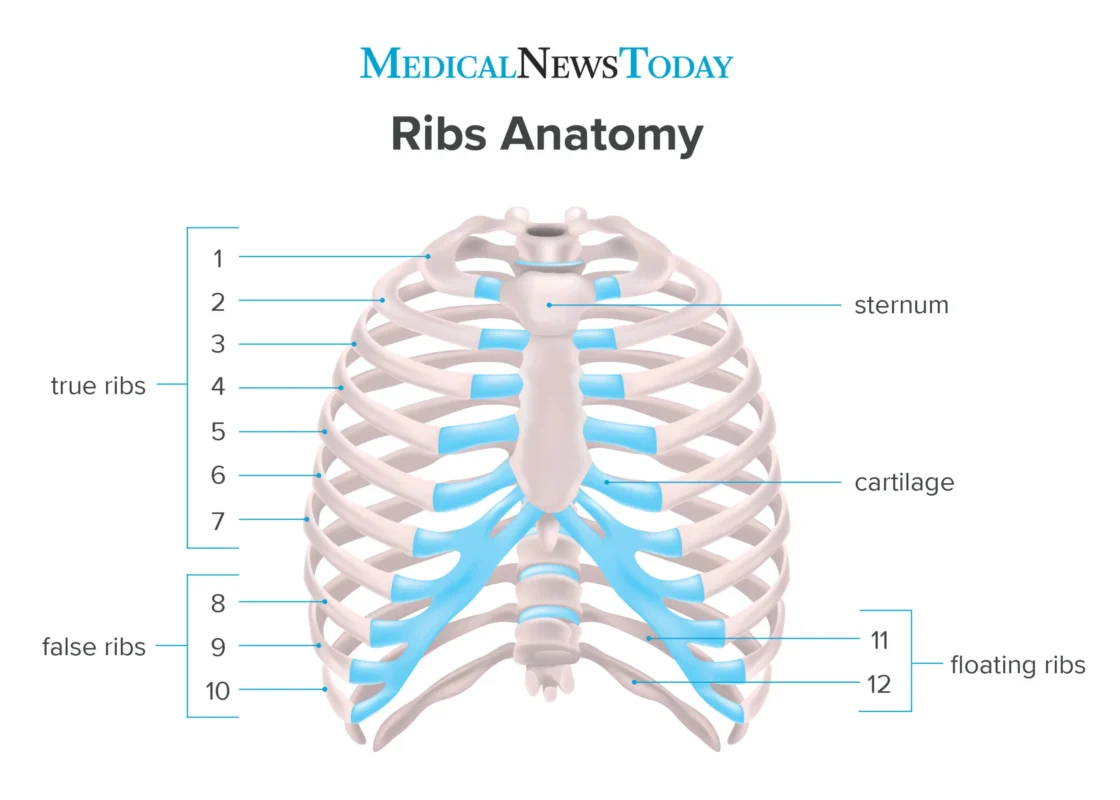Difference between male and female ribs
Difference between male and female ribs
Share this Post to earn Money ( Upto ₹100 per 1000 Views )

The differences between male and female ribs primarily relate to size and shape, reflecting broader anatomical variations between the sexes. Here are the key distinctions:
Rib Cage Structure
- Size and Volume:
- The male rib cage is generally wider and deeper than that of females. This contributes to a larger thoracic volume, which is about 10% greater in males compared to females of the same height.
- Length of Ribs:
- Research indicates that females tend to have relatively longer ribs in proportion to their axial skeleton compared to males. However, the absolute lengths of specific ribs (like the third, sixth, and ninth ribs) do not show significant differences between the sexes.
- Thoracic Shape:
- Males typically possess a broader thorax, while females have a narrower thorax. This anatomical difference is associated with the overall shape of the chest, which can influence lung capacity and function.
- Chest Circumference:
- Men usually have larger chest circumferences and depths compared to women, who have more breast tissue that affects the overall appearance of the rib cage.
Misconceptions
A common myth suggests that men have fewer ribs than women, stemming from cultural narratives. In reality, both sexes typically have 24 ribs (12 pairs), and there is no evidence supporting a difference in the number of ribs based on sex.
In summary, while both male and female rib cages serve the same fundamental functions—protecting vital organs and facilitating breathing—the structural differences reflect the broader physiological characteristics associated with each sex. Buy real human ribs and bones here
Human rib cage bones
The human rib cage, also known as the thoracic cage, consists of several key components that work together to protect vital organs and facilitate breathing. Here are the main bones that comprise the rib cage:
Components of the Rib Cage
- Ribs:
- There are 12 pairs of ribs, making a total of 24 ribs. These ribs are categorized into three types:
- True Ribs (1st to 7th pairs): These attach directly to the sternum via costal cartilages.
- False Ribs (8th to 10th pairs): These do not attach directly to the sternum but connect to the costal cartilage of the rib above.
- Floating Ribs (11th and 12th pairs): These are not attached to the sternum at all and only connect to the vertebrae.
- Sternum:
- The sternum, or breastbone, is a flat bone located at the front of the rib cage. It consists of three parts:
- Manubrium: The upper part that articulates with the first rib and clavicles.
- Body: The central part that connects to the costal cartilages of the true ribs.
- Xiphoid Process: The small, cartilaginous lower portion that ossifies in adulthood.
- Thoracic Vertebrae:
- The rib cage is also associated with 12 thoracic vertebrae (T1 to T12) in the vertebral column. Each rib articulates with the corresponding thoracic vertebra at the back.

Function and Importance
The rib cage serves several critical functions:
- Protection: It safeguards vital organs such as the heart and lungs.
- Support: It provides structural support for the upper body and attachment points for muscles involved in respiration.
- Breathing: The movement of the ribs during inhalation and exhalation facilitates lung expansion and contraction.
In summary, the rib cage is a complex structure composed of ribs, the sternum, and thoracic vertebrae, all working together to protect vital organs and assist in the respiratory process.
How many pairs of floating ribs do humans have?
Humans have a total of four floating ribs, which consist of two pairs located at the bottom of the rib cage. These floating ribs are the 11th and 12th pairs and are unique because they do not attach to the sternum at all; instead, they only connect to the vertebrae in the back.

In summary, the rib cage comprises 12 pairs of ribs, with the first seven pairs classified as true ribs, the next three pairs as false ribs, and the last two pairs as floating ribs.






